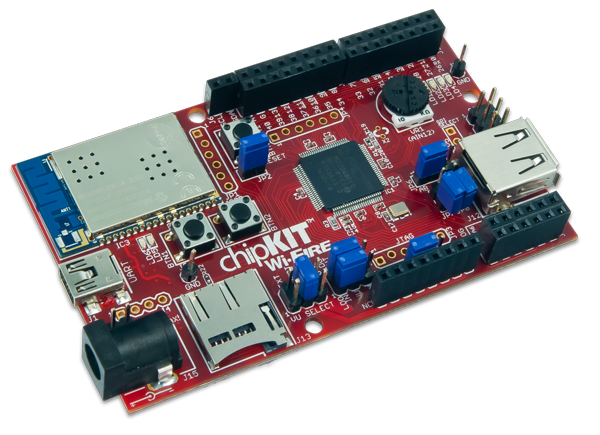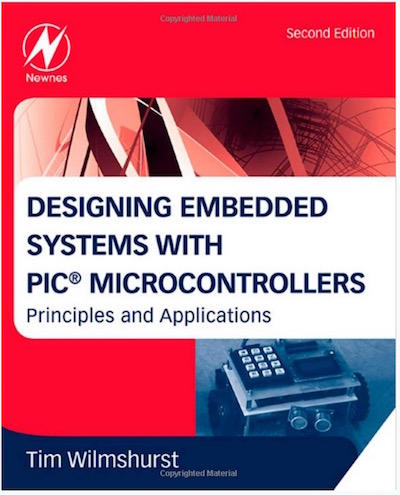Recent Posts
WiFi Development Board With Arduino Compatible Programming Interface
Posted by on
The chipKIT™ Wi-Fire board enables rapid prototyping with Microchip’s latest PIC32MZ architecture and Imagination Technologies' Flow Cloud Internet connectivity development software. The chipKIT™ WF32™ by Digilent is an easy-to-use platform for developing Wi-Fi ® applications. As with other chipKIT boards, it uses a modified version of the original Arduino® IDE for compatibility with existing code examples, tutorials and resources. Also compatible with MPLAB® X IDE.
The WF32 includes several peripherals on board, including Wi-Fi radio module, USB OTG (host or device) interface, microSD™ card slot, buttons, LEDs, potentiometer and lots of extra I/O. A full-featured HTML server application is available by download. Can be powered by USB, or an external power supply.
- PIC32MX695F512L processor with 512K Flash, 32K RAM
- Up to 80 MHz operating speed
- MRF24WG0MA Wi-Fi module
- microSD card connector
- USB 2.0 OTG interface
- Four user LEDs, two buttons
- 42 available I/O lines
Designing Embedded Systems with PIC Microcontrollers - Principles and Applications
PIC microcontrollers are used worldwide in commercial and industrial devices. The 8-bit PIC, which this book focuses on, is a versatile work horse that completes many designs. An engineer working with applications that include a microcontroller will no doubt come across the PIC sooner rather than later. It is a must to have a working knowledge of this 8-bit technology.
This book takes the novice from introduction of embedded systems through to advanced development techniques for utilizing and optimizing the PIC family of microcontrollers in your device. To truly understand the PIC, assembly and C programming language must be understood. The author explains both with sample code and examples, and makes the transition from the former to the latter an easy one. This is a solid building block for future PIC endeavors.
New to the 2nd Edition:
- Includes end of chapter questions/activities moving from introductory to advanced
- More worked examples
- Includes PowerPoint slides for instructors
- Includes all code snips on a companion web site for ease of use
- A survey of 16/32-bit PICs
- A project using ZigBee
- Covers both assembly and C programming languages, essential for optimizing the PIC
- Amazing breadth of coverage moving from introductory to advanced topics covering more and more complex microcontroller families
- Details MPLAB and other Microchip design tools
 Loading... Please wait...
Loading... Please wait...


